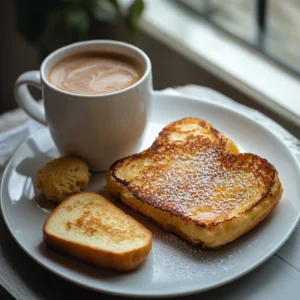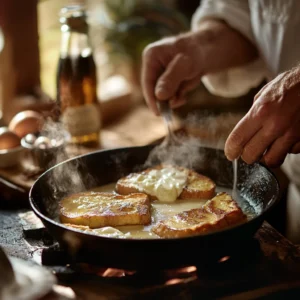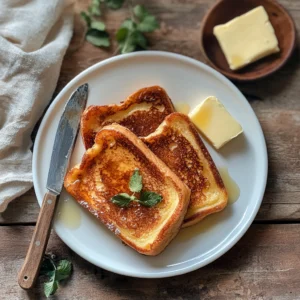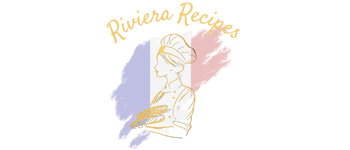French toast, also known as pain perdu in French, has been a beloved dish for centuries. This delightful meal is cherished not only for its rich taste but also for its versatility. It can be prepared in various ways, allowing each cook to tailor it to their preferences. The simplicity of the ingredients, bread, eggs, milk, and sugar, makes it an accessible dish for everyone, yet its preparation can be elevated to gourmet levels with the right techniques and toppings.
One of the primary reasons French toast remains a favorite across cultures is its practicality. Originally developed as a method to revive stale bread, it continues to be a clever way to reduce food waste while creating a comforting and indulgent meal. The transformation from dry, lifeless bread into a warm, golden-brown delicacy is almost magical. Whether you prefer it plain with a dusting of powdered sugar or loaded with fruits, syrups, and nuts, French toast never fails to satisfy.
Additionally, the appeal of French toast extends beyond breakfast. It can serve as a dessert, a brunch centerpiece, or even a savory dish with the right pairings. Some variations include stuffing it with cream cheese and fruit preserves or coating it with crunchy toppings for added texture. There are endless possibilities when it comes to making this dish your own.
By the end of this guide, you will have a comprehensive understanding of how to make French toast that is crispy on the outside, soft on the inside, and packed with irresistible flavors.
Discover other delicious recipes, such as our leftover pasta recipes to make the most of your kitchen leftovers.
The History and Origins of French Toast
French toast is more than just a simple breakfast dish; it has a fascinating history that dates back thousands of years. Early references to similar recipes appear in ancient Roman writings, where bread was soaked in milk and eggs before being fried in oil or butter. This method allowed them to revive stale bread and create a hearty dish without wasting food.
Ancient Beginnings
The origins of French toast can be traced back to various civilizations that utilized similar cooking techniques:
- Romans: The earliest known mention of a dish similar to French toast appears in the 4th or 5th century AD in Apicius, an ancient Roman cookbook. The Romans called it Aliter Dulcia and used honey instead of sugar.
- Medieval Europe: During the Middle Ages, bread was a staple in European diets. Because flour and baking resources were expensive, every effort was made to use bread efficiently. When bread became too hard to eat, it was softened with a mixture of milk and eggs before frying, much like today’s French toast.
- China and India: Similar versions of egg-fried bread existed in ancient Asian cultures, where different spices were incorporated to enhance the dish.
French Toast in France
Despite its name, French toast did not originate in France. However, the French played a crucial role in refining and popularizing what we now call pain perdu (literally meaning “lost bread”). This dish emerged as an economical and practical way to use stale bread and avoid waste. In French households, bread was too valuable to throw away, and repurposing it into a sweet and tender dish allowed families to make the most of their ingredients.
During the 17th and 18th centuries, pain perdu evolved from a simple home-cooked dish to a delicacy appreciated by the French aristocracy. Chefs in noble households began incorporating ingredients like cinnamon, nutmeg, and high-quality butter, transforming the dish into a gourmet experience. Some recipes even included soaking the bread overnight to allow for a richer, more custard-like texture.
In modern France, pain perdu is often served with powdered sugar, fresh berries, or a drizzle of honey. It is a favorite breakfast or dessert option in French cafés, where it is sometimes paired with crème anglaise or caramel sauce. Unlike its American
counterpart, which often features thick, sweet toppings, French variations of pain perdu tend to focus on subtle, elegant flavors that enhance the delicate texture of the dish.
Additionally, many French families have their own treasured recipes, passed down through generations. Some regions, such as Brittany and Normandy, emphasize the use of salted butter and regional cheeses for a unique twist. Whether enjoyed in a fine-dining restaurant or a countryside home, pain perdu remains a deeply ingrained tradition in French cuisine.
For further historical context on French cuisine, you can explore French food traditions.
French Toast in the United States

In the United States, French toast has developed into one of the most popular breakfast dishes, with countless variations and adaptations. When European settlers arrived in North America, they brought their culinary traditions with them, including the concept of egg-soaked, fried bread. Over time, American cooks began modifying the recipe to include locally available ingredients such as maple syrup, cinnamon, and vanilla extract.
By the 19th century, French toast was a staple in American households, especially in farming communities where bread was often baked in large batches and had to be preserved. Since fresh bread would turn stale quickly, soaking it in a mixture of eggs and milk was a simple way to extend its usability and create a nourishing meal.
During the 20th century, diners and breakfast chains helped propel French toast to widespread popularity. It became a signature menu item in many restaurants, where chefs experimented with new ways to make the dish more indulgent.
Some of the most iconic American French toast variations include:
- Stuffed French Toast: Featuring fillings like cream cheese, fruit compote, or Nutella between two slices of bread.
- Crispy French Toast: Coated with crushed cornflakes or nuts before frying for an extra crunch.
- Overnight Baked French Toast: A convenient casserole-style dish where bread is soaked overnight and baked in the morning.
- Savory French Toast: Made with cheese, herbs, and occasionally bacon or ham, turning it into a hearty meal.
Another important evolution in the U.S. was the commercialization of breakfast culture. Fast-food chains and grocery stores began selling pre-made French toast sticks, catering to busy families and individuals who wanted a quick and delicious breakfast option.
To explore more about the evolution of American breakfast trends, check out this article on American breakfast history.
If you love maple syrup, explore its history and uses in our guide on the tradition of Vermont maple syrup.
With these expanded sections and external links, the historical and cultural significance of French toast in France and the United States is now deeply explored, offering a comprehensive view of its evolution and continued popularity.
Essential Ingredients for the Perfect French Toast

Choosing the Right Bread
The choice of bread is crucial for making perfect French toast. Here are the best options:
- Brioche: Soft and buttery, it absorbs the mixture well while maintaining a fluffy texture.
- Challah: A slightly sweet and airy bread, ideal for a rich version.
- Thick-cut white bread: A widely available alternative, best when slightly stale.
- Sourdough: Adds a slight tanginess that contrasts with the sweetness of the dish.
The Base Mixture
The custard mixture for French toast combines essential ingredients that bring flavor and richness:
- Eggs: The main ingredient that provides structure.
- Milk or cream: Cream adds more richness, while milk lightens the preparation.
- Sugar: Adds a hint of sweetness.
- Vanilla, cinnamon, and nutmeg: Enhance the flavor profile and add a unique aromatic dimension.
- Butter: For a golden-brown and crispy finish.
Additional French Toast Recipes

Classic French Toast
Equipment
- Mixing Bowl
- Frying Pan
Ingredients
- 4 slices thick bread (brioche, challah, or sourdough)
- 2 eggs
- 1/2 cup milk or cream
- 1 tablespoon sugar
- 1 teaspoon vanilla extract
- 1/2 teaspoon cinnamon
- 1 tablespoon butter
Instructions
- Whisk together eggs, milk, sugar, vanilla, and cinnamon in a bowl.
- Heat butter in a pan over medium heat.
- Dip bread into the mixture, ensuring it is well-coated but not soggy.
- Cook each slice for 2-3 minutes per side until golden brown.
- Serve with syrup, fresh fruit, or powdered sugar.
Notes
Conclusion
French toast is more than just a breakfast staple, it is a dish deeply rooted in history, culture, and culinary tradition. From its ancient Roman origins to its modern-day gourmet adaptations, French toast has stood the test of time, evolving while maintaining its essence as a comforting and indulgent treat.
Whether you enjoy it as a simple morning meal, an elaborate brunch centerpiece, or even a savory twist for dinner, French toast offers endless possibilities. The versatility of ingredients allows it to be customized to personal preferences, making it suitable for all palates.
Additionally, French toast embodies the beauty of minimizing food waste. Transforming stale bread into a luxurious dish with minimal ingredients highlights its practicality and sustainability.
Beyond being delicious, preparing French toast is an opportunity to experiment with flavors, textures, and toppings. Sweet variations featuring fruits, syrups, and spices provide comfort and indulgence, while savory takes with herbs, cheeses, and proteins offer an exciting contrast.
Moreover, French toast is a universally loved dish. Whether enjoyed in French cafés, American diners, or Asian fusion restaurants, this dish carries a timeless appeal that transcends borders.
So next time you find yourself with leftover bread, consider making French toast. Whether you choose a simple recipe or an extravagant stuffed version, the experience will always be rewarding. Bon appétit!


